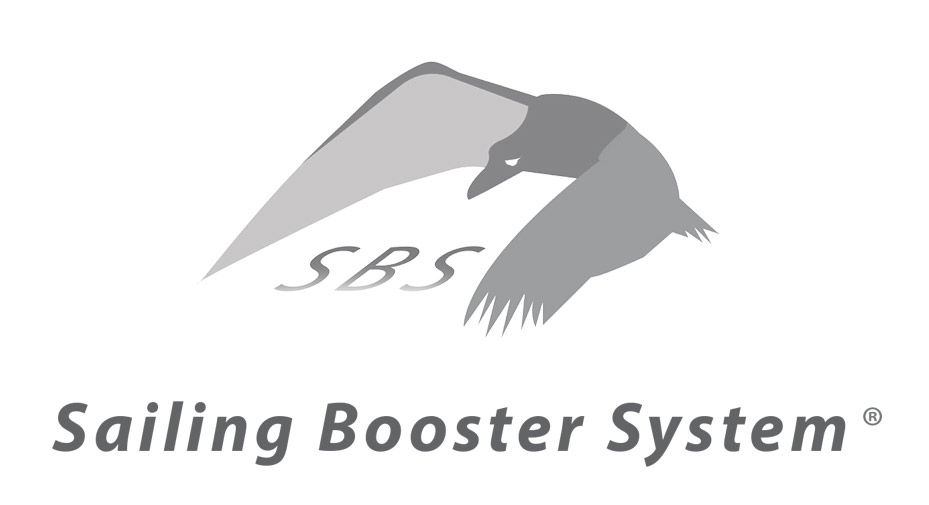
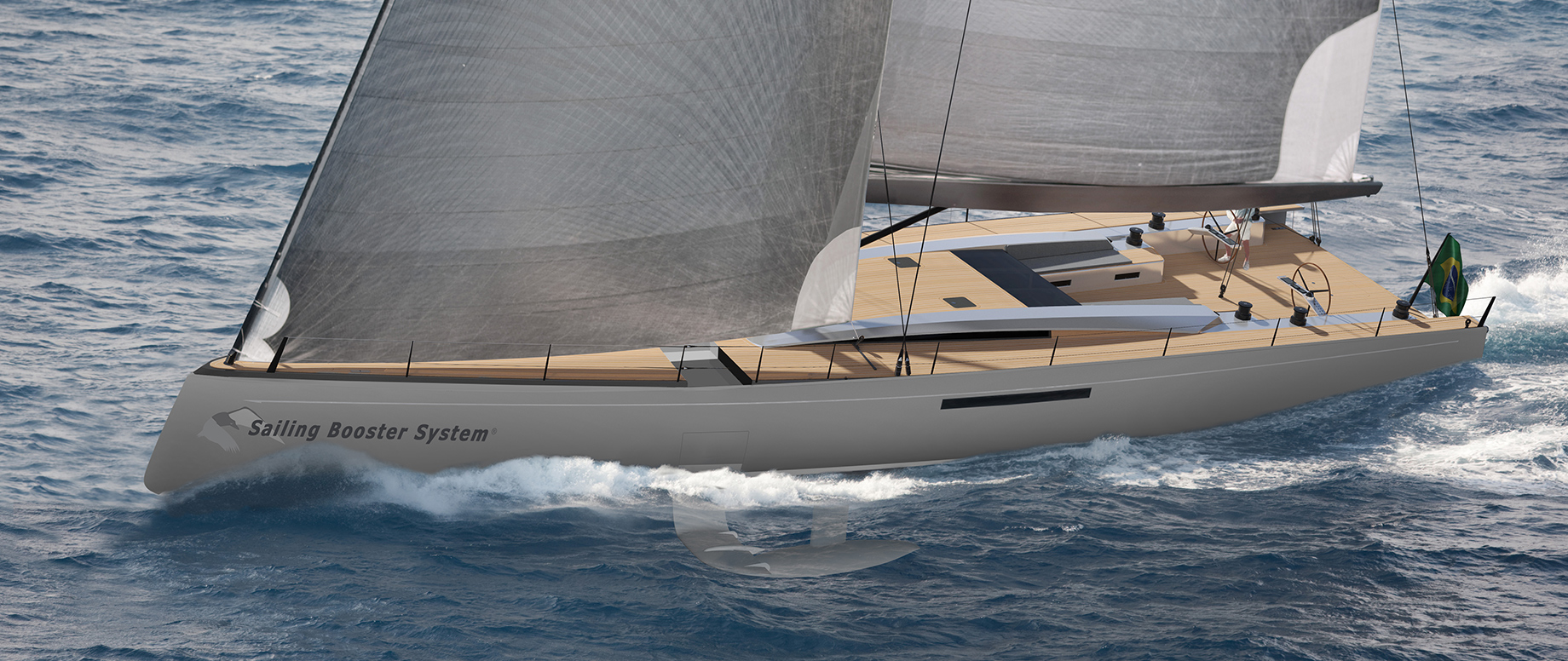
SIDE BY SIDE
Comparing Stability and Performance of an 80 foot modern sailboat with and without SBS
Sailing experience has been taken to a new dimension
New exciting times are shining towards a bright horizon
In the last century, sailing faster and safer has been a matter of reducing as much weight as possible in order to achieve a lighter vessel displacement.
A variety of materials were used to develop designs focused on removing weight from masts, sails, decks and hulls. While heavier materials are applied to hydrodynamic keel bulbs, consequently developing ballast tanks, canting keels and other devices.
Nothing so light, fast, agile and radical as SBS has been seen before to enhance speed and stability for an unique vessel displacement performance.
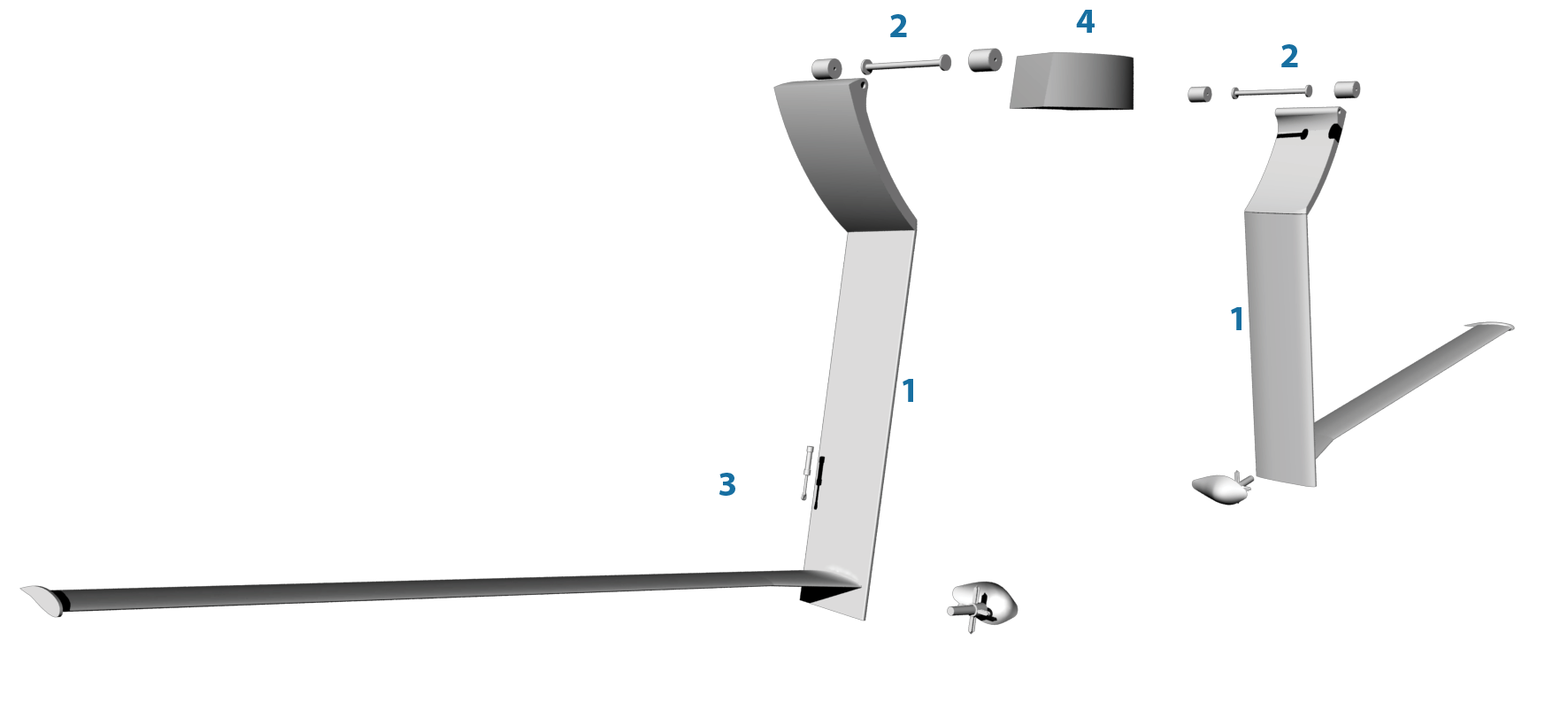
SBS system is composed by two specific wings (hydrofoils) (1) on each side of the vessel. These two wings, the keel wing and lift wing, have separate actuators. The lift wing has a hydraulic piston actuator (3), in order to generate quick changes in the wing lift angles. Hydraulic rotation units (2) move the keel wings down, sideways or up according to the skipper's desires. A hydraulic electrical package provides hydraulic power while an electronic control box (4) measures hull heeling and rolling, plus pitch acceleration, rapidly controlling the vessel in order to improve performance, comfort and stability while in a regatta or cruising. The same control system can be managed on your smartphone or even on a wireless key push bottom inside your pocket.
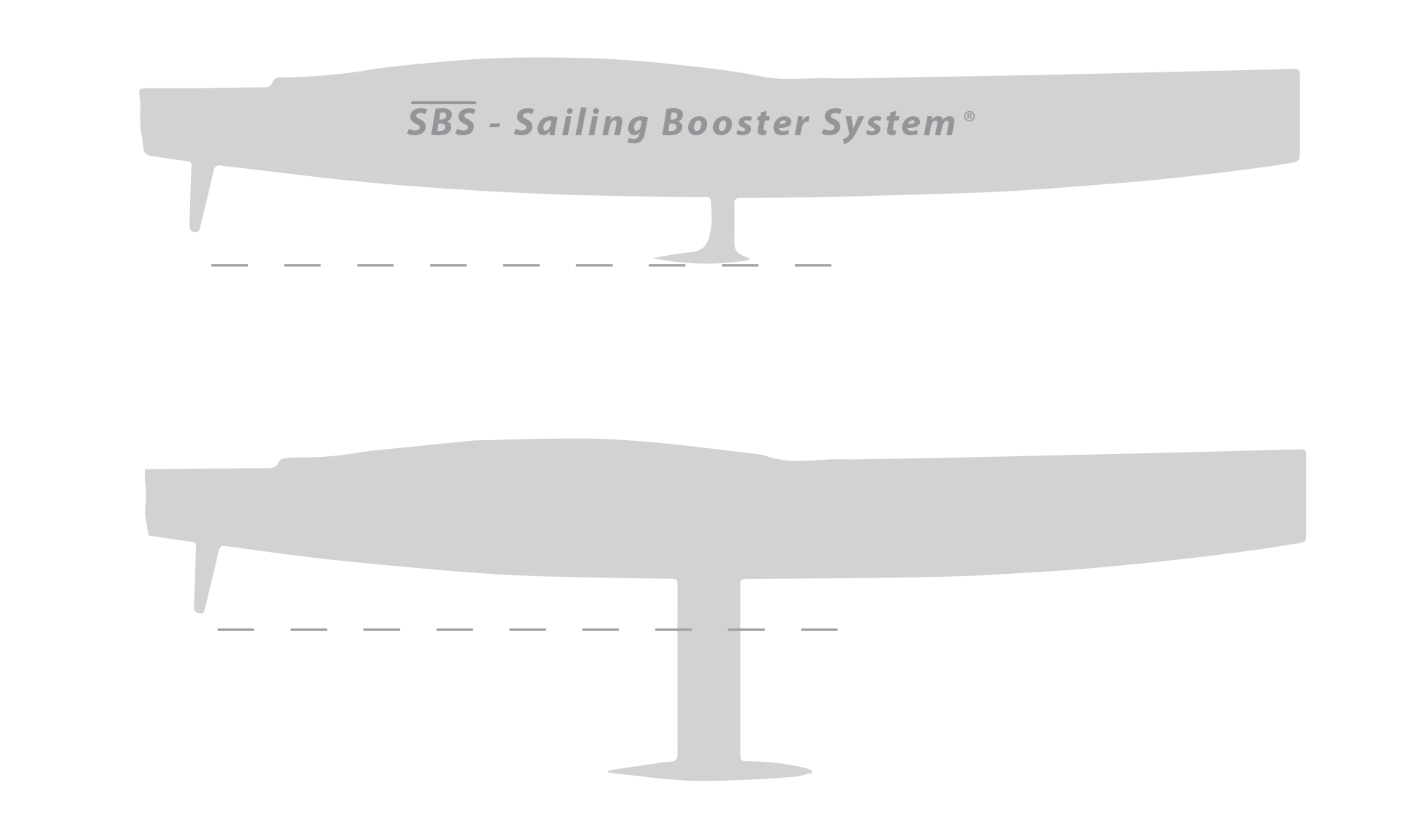
The lift wing may reduce bulb keel weight up to 68%.
For example, in a 10 ton ballast keel, you may save up to 6.8 tons*.
* ask assistance from a naval engineer or architect to balance your project needs.
Canting keels with their weight and huge drafts are not needed anymore. Small fixed center keels are chosen in order to omply with stability regulations and to avoid direct rudder crash on shallow waters. The sailboat displacement in a static position may drop a total of 23%. While under way, at higher speeds, the final total dynamic displacement can drop up to 50% of a regular type sailboat of the same size.
Less displacement means, less wet surface and less total resistance in almost all wind conditions.
Displacement sailboat hulls perform better in light to medium air. However, in strong wind, speed performance is limited.
With SBS, semi displacement sailboat hulls with full body transom lines, will easily get into plane mode, rapidly disappearing into the horizon, nautical miles ahead from other canting keels or conventional high speed sailboats.
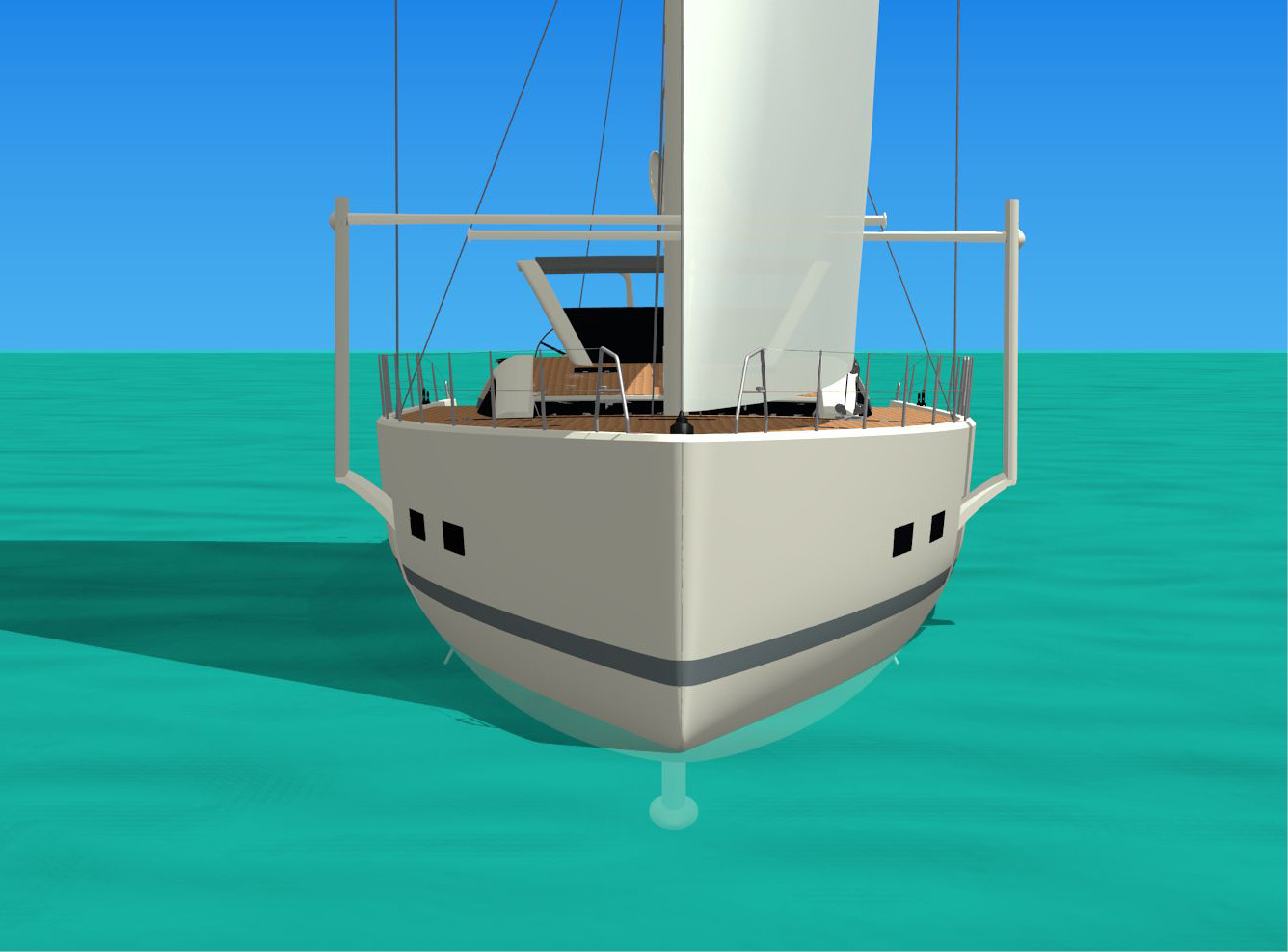
In aft and broad winds you will be able to remove both SBS wings from the water keeping them up or in horizontal position. Wet surfaces and drags will be kept to a minimum.
If the skipper of a semi displacement sailboat hull wants to get into a planing mode, using a touch of a finger on the control panel allows the lower leeward wing to increase lift and stability. By reducing displacement and lifting the midship / bow sections, the vessel will increase speed, getting into the planing mode.
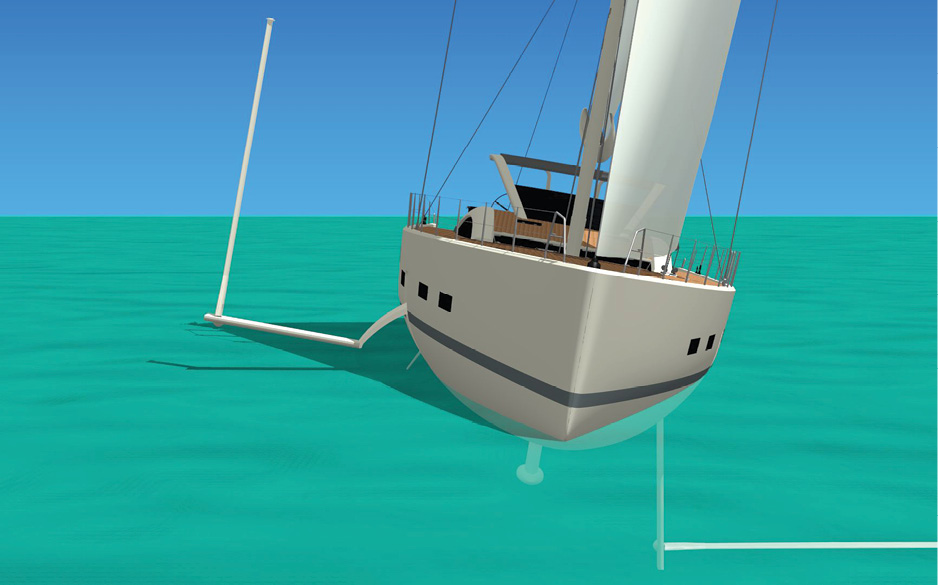
While cruising, engine efficiency will be increased by having the two SBS on up vertical or horizontal positions.
If comfort is a priority, only one SBS wing can be kept submerged in order to provide perfect stability.
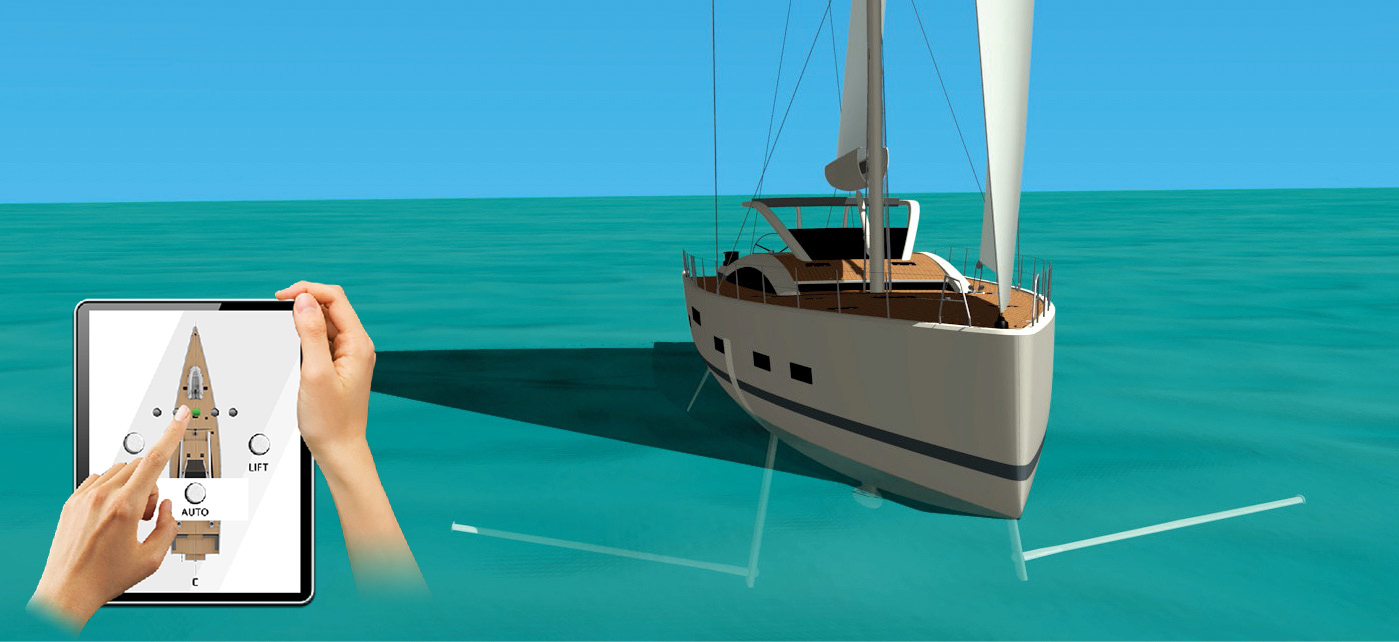
Control of the system can be monitored using a smartphone, Tablet or a wireless key push bottom, the same way as garage door opener.
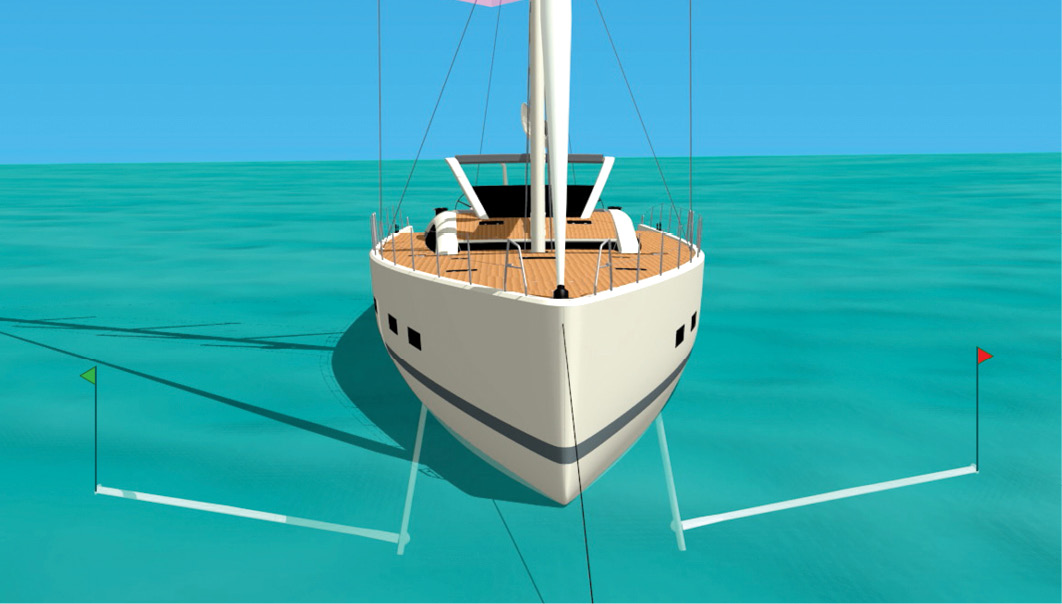
The SBS wings are strong enough to be used as a swimming platform.
In the lift wings extremity there are attachments for flags to mark the ends, to avoid accidents if a small boat comes too close.
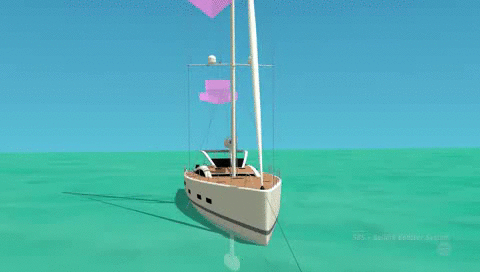
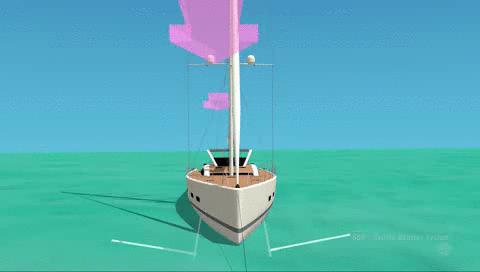
When the time comes to anchor at a cove where rolling motion is a problem, the SBS system is not only a luxury feature, but an important tool for all conditions.
The vessel is kept in place and anchors smoothly. The typical movement that sailboats have while anchored, with the tendency to sail to each side (yaw) as the wind front angle changes is completely blocked. The SBS keel wing system prevents the bow from moving sideways, while the stern of sailboats with conventional keels will continue to turn.
Having both SBS wings lowered into the water, the resistance against rolling movements is huge.
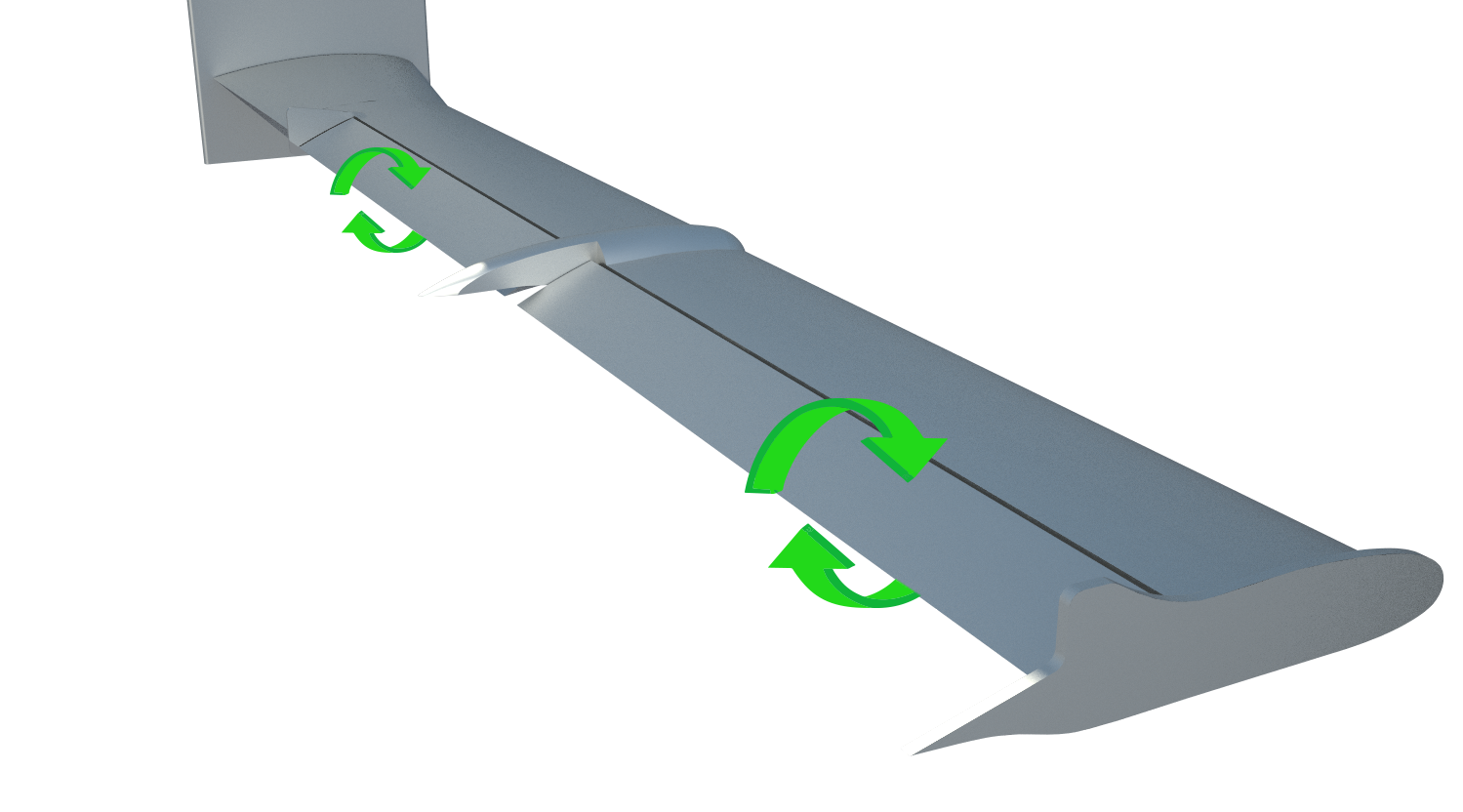
AILERON LIFT WINGS
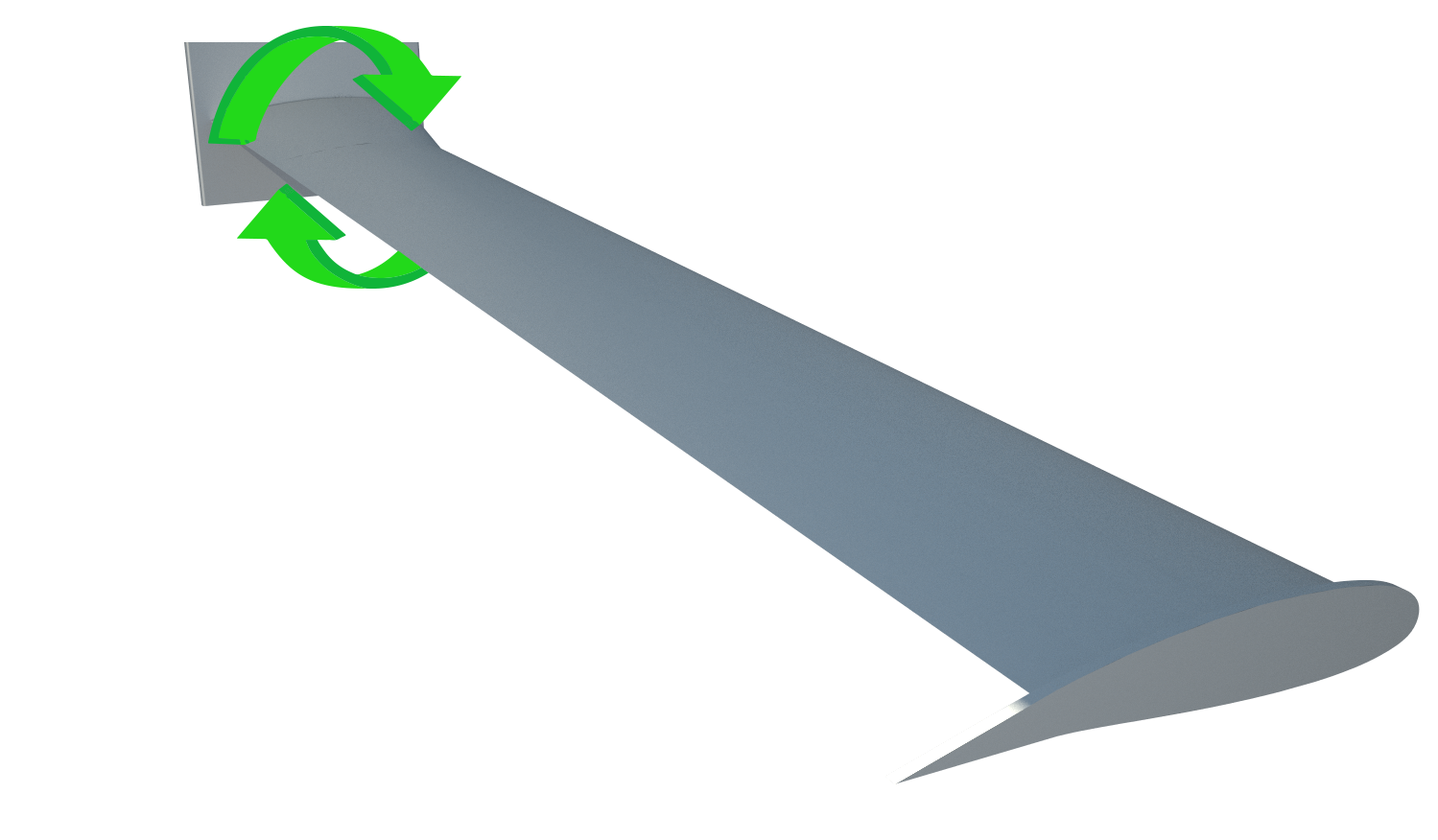
ROTATION LIFT WINGS
New projects can be designed by having long or short wing keels, high / low or medium lift wings capability.
The lift wing also can be designed with ailerons or a rotate wing assembly depending how much lift or right moment the Naval Architect is planning in his project .
Reducing and tuning the keel size and weight, supported by the SBS engineering team to identify the correct SBS wing keels and wing lifts design, Naval Architects and Engineers will provide to their clients a new experience for the sail and motor yachts.

SBS wings are easy accessible for the crew above the deck , facilitating maintenance such as polishing and cleaning; or, if while sailing, plastic, trash or sea weed gets caught, it can easily be removed by placing up the wings. The wings also can be used for a smooth transfer of crew members while in open waters avoiding unnecessary swims in cold or unclean waters.
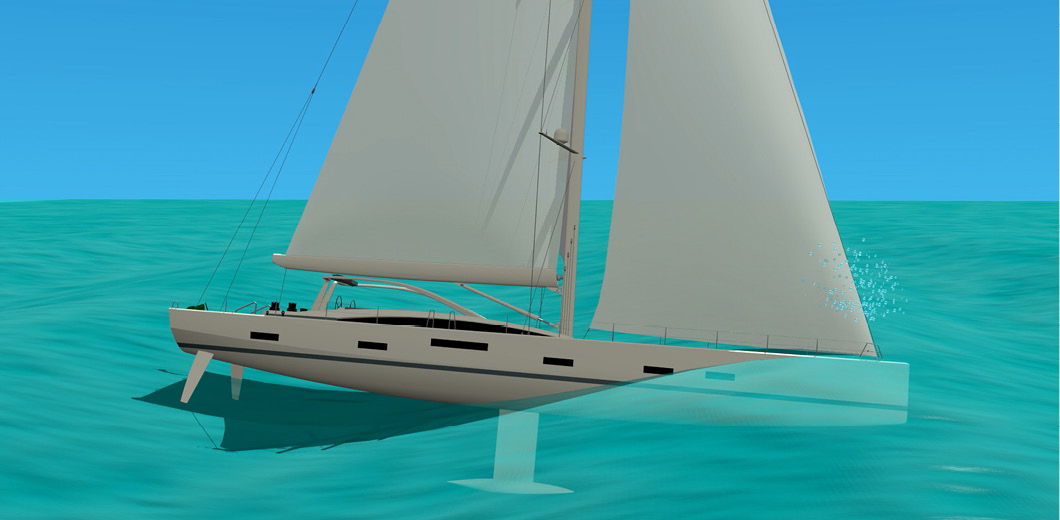
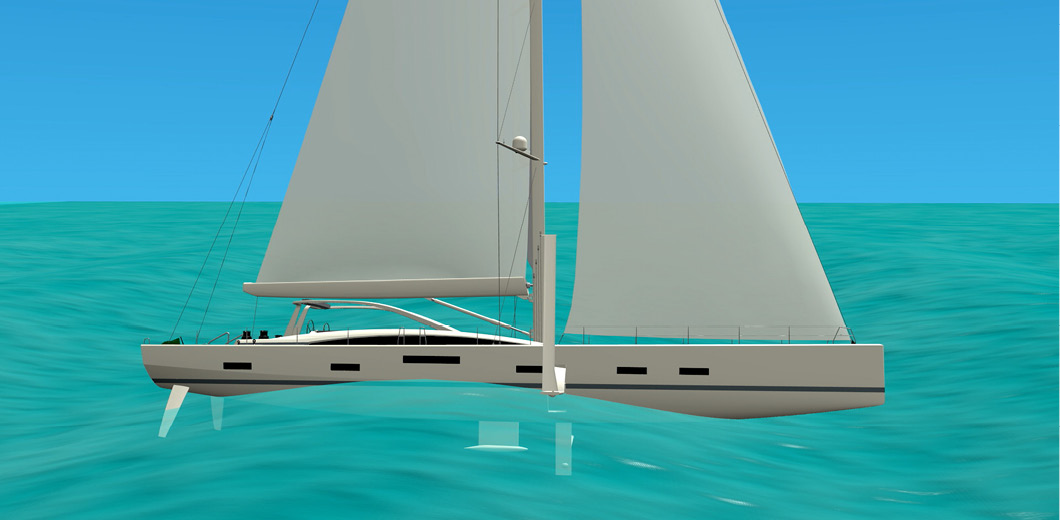
At high speeds, sailboats have a vast pitch acceleration on the bow, causing water to embark and the crew must keep distance from the bow in order to avoid accidents. The SBS system generates forward lift to the static center of buoyancy reducing while sailing the vessel's pitch and the quantity of water embarked due to the bow waves.
The electronic control box and acceleration sensor on the bow immediately creates up and down forces to compensate the buoyancy changes. The bow does not have to be submerged to create lift.
By having less water on the deck and less water impact, weight is reduced, speed is increased, equipment failure is minimized and most importantly, crew members are kept safe. In the past, astern water ballast tanks have been used for the Volvo Ocean Race sailboats and similar projects. With the SBS system the astern ballast is obsolete.
On aft winds sailing under gennaker or spinnaker, the bow will not be flooded anymore. In heavy seas, lowering the two SBS wings even more, the not flooding of the bow is assured.
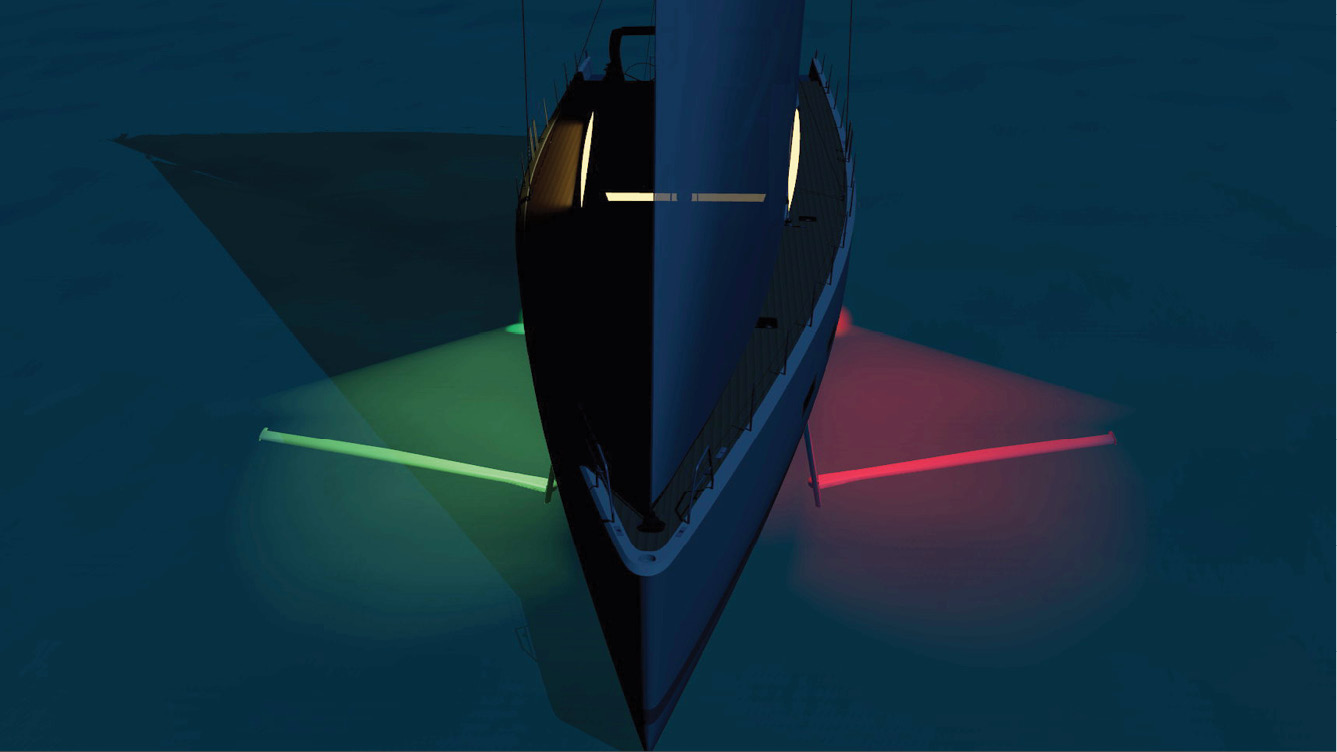
At night, even under sail, the lift wing can be kept illuminated by hull lights or, if preferred, turned off to see the natural spectacular light show performed by the plankton luminescence. A "Free light show" all night long!
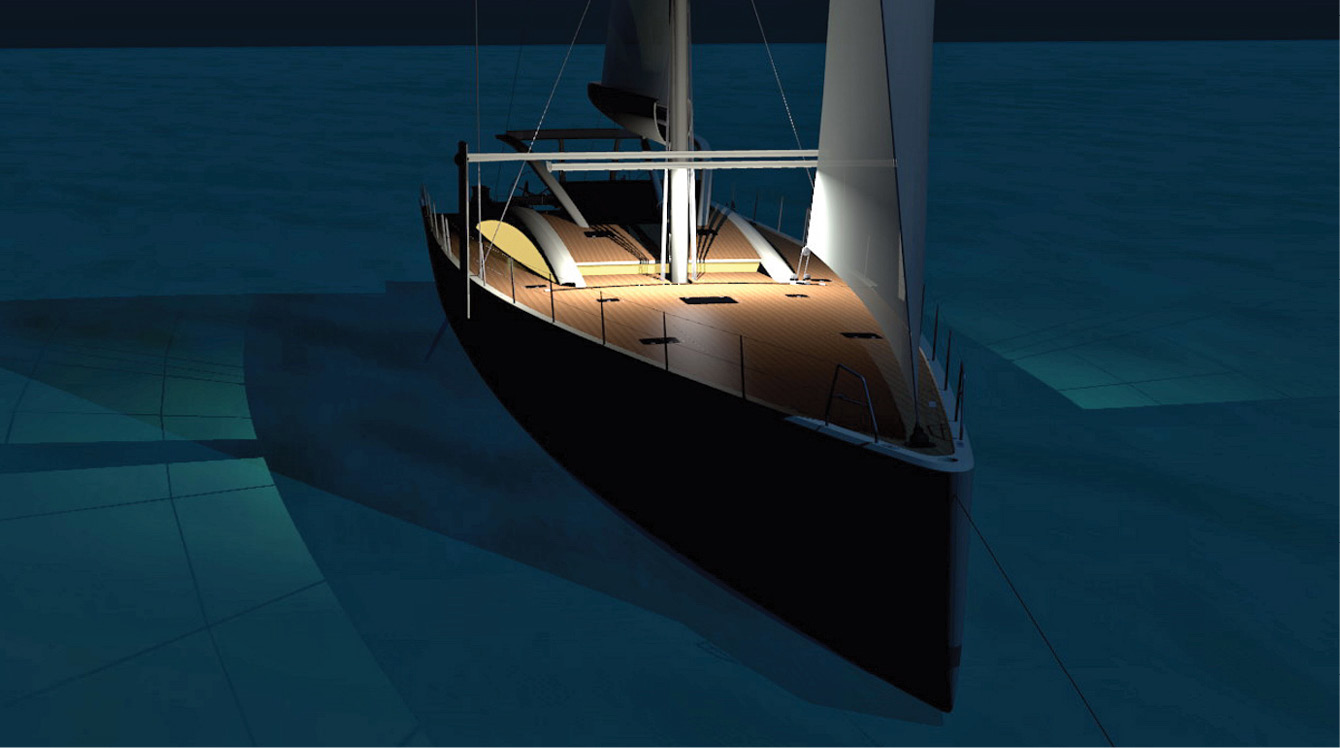
When the wings are up, resembling a radar arch, lights can illuminate the deck. The wings are designed so that it is possible to walk below them, but depending on the project parameters, the SBS wings may be placed flush on the deck.

Due to their long keels, fast speed sailboats are always a challenge when stored on shore, due to their height they are not easy accessible and a danger for anyone that would fall from the main deck. Expensive supports and structures are necessary in order to keep the vessel safe and steady specially at windy days. Maintenance and hull painting are also difficult to be performed. Shafts and propellers are too high to reach. SBS vessels do not share these kind of difficulties. The hull is kept low with rudders and keel close to the floor surface.

SBS wings can be stored in the upper right position or placed sideways in order to act as extra support on shore, increasing vessel's stability in high sideways wind.
During the vessel construction the hull is maintained low, easy to climb, facilitating access, eliminating hydraulic or mechanical platforms.
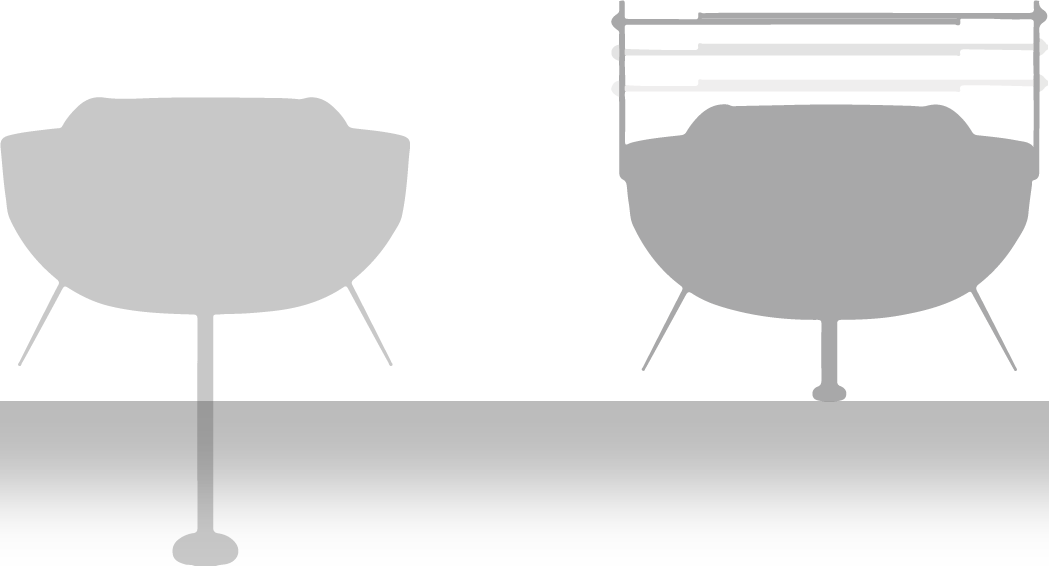
The operation to arrive in shallow water coves, ports and marinas was never so easy to be accomplished. By a push of a button, both sides (port and starboard) SBS wings will rotate up coming out from the water and stored above the deck.*
Draft will be reduced in seconds to the yacht rudders lower point. One meter draft (depending on the rudder design) could be a regular marina mooring place for an 80 feet sailboat by using the SBS system.
*According to your final design, the lift wings can be placed at any height on the wing keels. They can be designed to be kept flush on the deck while in the upper position.
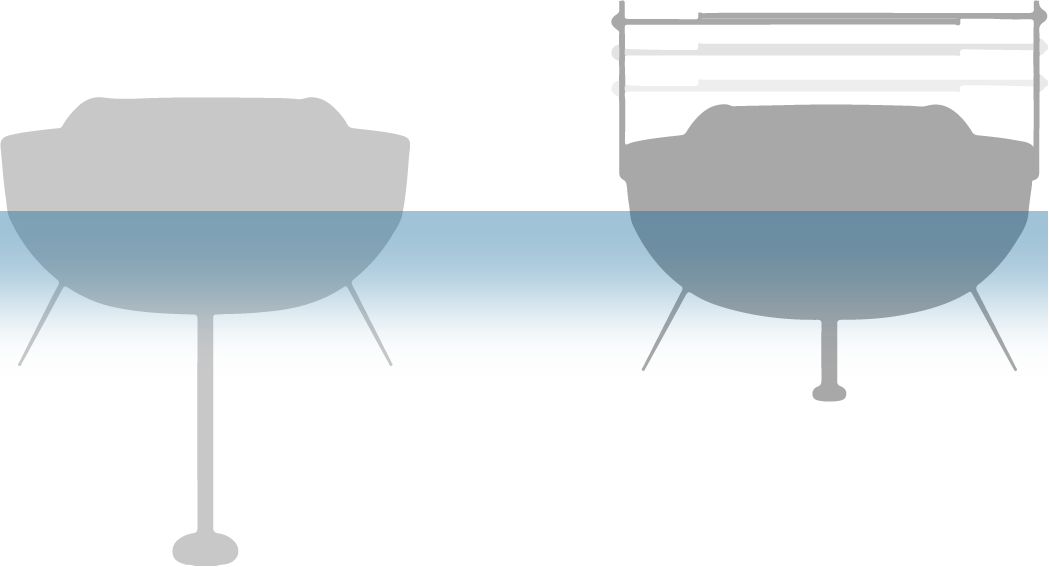
While the SBS wings are placed above the deck, on the upright position, the sailboat original beam is maintained. Less Marina draft for the any size of sailboat, is not a dream anymore . It is the SBS reality.
SBS Sailboat
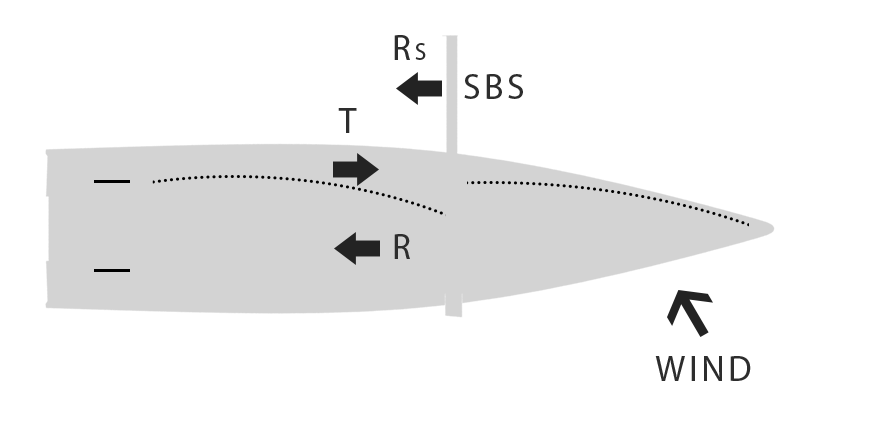
T = Total Resultant Sails thrust force forward
R = Total Resultant resistance hull forces against movement (hull plus appendages).
Rs = Lift wing total resistance.
*rudders at zero attack angle, resulting in no drag.
Standard Sailboat
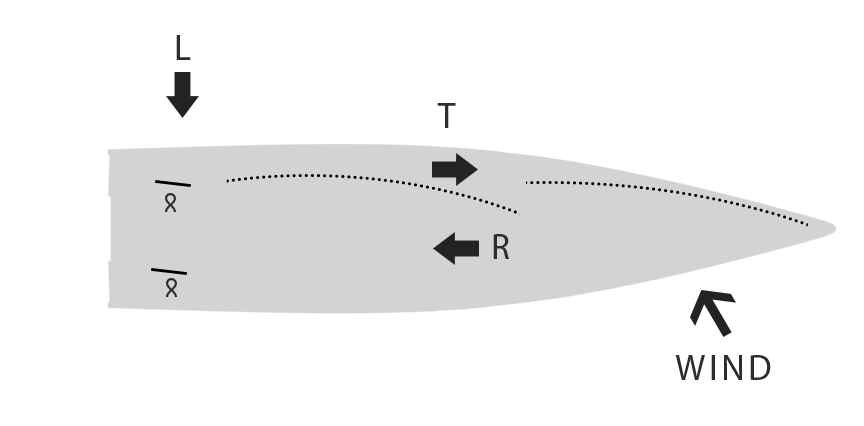
T = Total Resultant Sails thrust force forward
R = Total Resultant resistance hull forces against movement (hull plus appendages).
L = Rudders side force in order to compensate the binnar generated by T and R forces.
Alfa = Rudders attack angle in order to compensate vessel's trend to tack.
Every sailor, when tacking, knows how difficult it is sometimes to keep the bow from yaw and sail against the wind.
This situation is due to the fact that the sail plan thrust forces are not in the same direction and plan of the hydrodynamic hull plus appendages resistances.
These two forces induce a binary moment that the sailboat rudders have to compensate all time.
Rudder compensation creates drag and hydrodynamic resistance reducing the vessel speed.
The SBS leeward wing reduces, or almost completely removes this binary, making the rudder angle, while tacking, close to zero.
Less drag, less displacement, more speed.
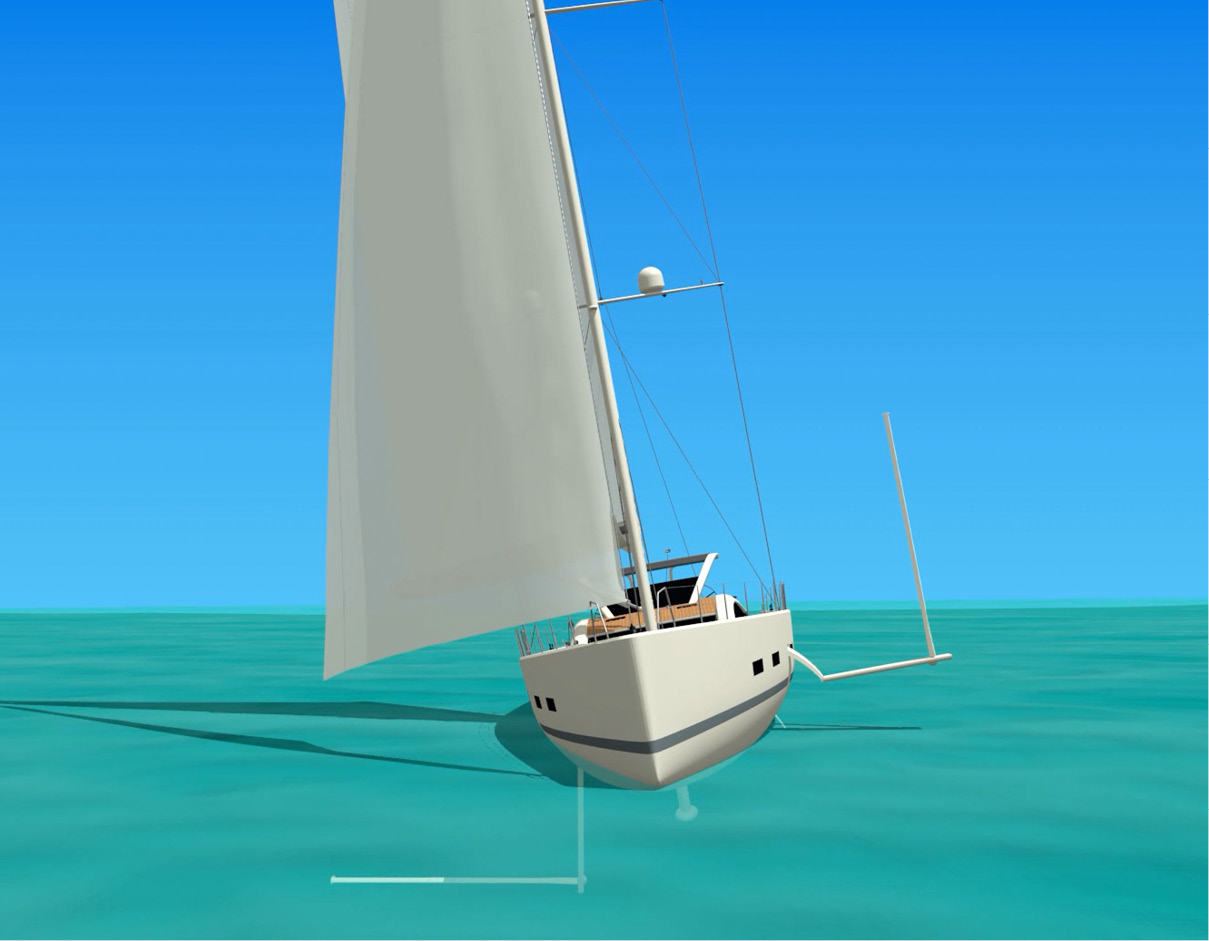
For each skipper there is a heeling hull angle that feels comfortable and appropriate regarding speed and waterline shape.
Having an SBS, with the touch of the skipper's finger, these angles can be selected and the vessel will automatically obey.
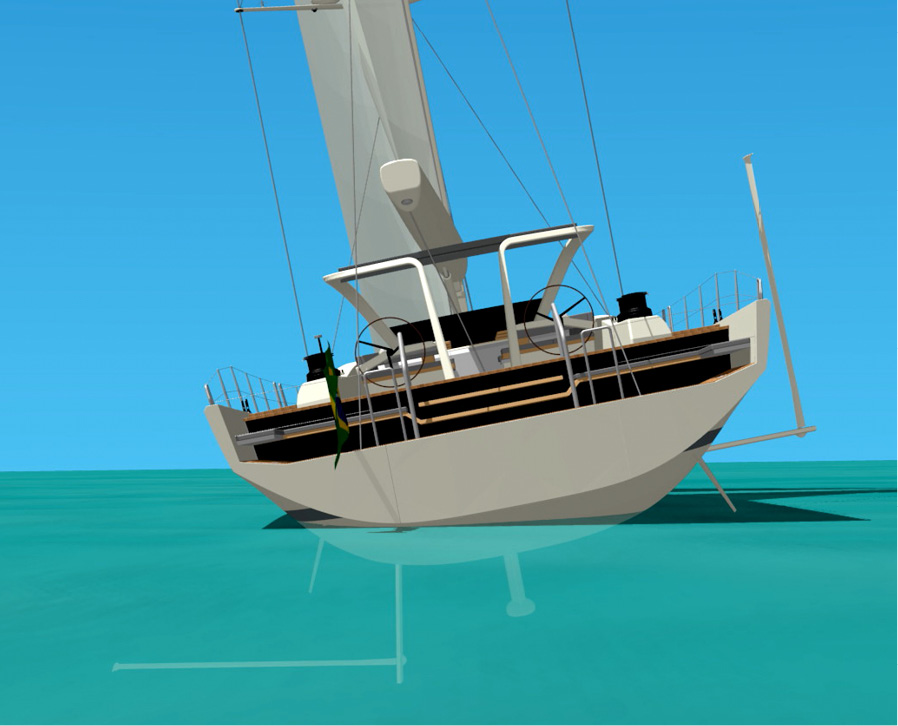
At the same time, for two rudders sailboats, skippers also may adjust the hull heeling in order to keep the leeward rudder stock perpendicular to the water plane, while the windward rudder is kept completely out of the water.
In both cases the skipper maximizes rudders steering forces and minimizes windward rudder resistance.
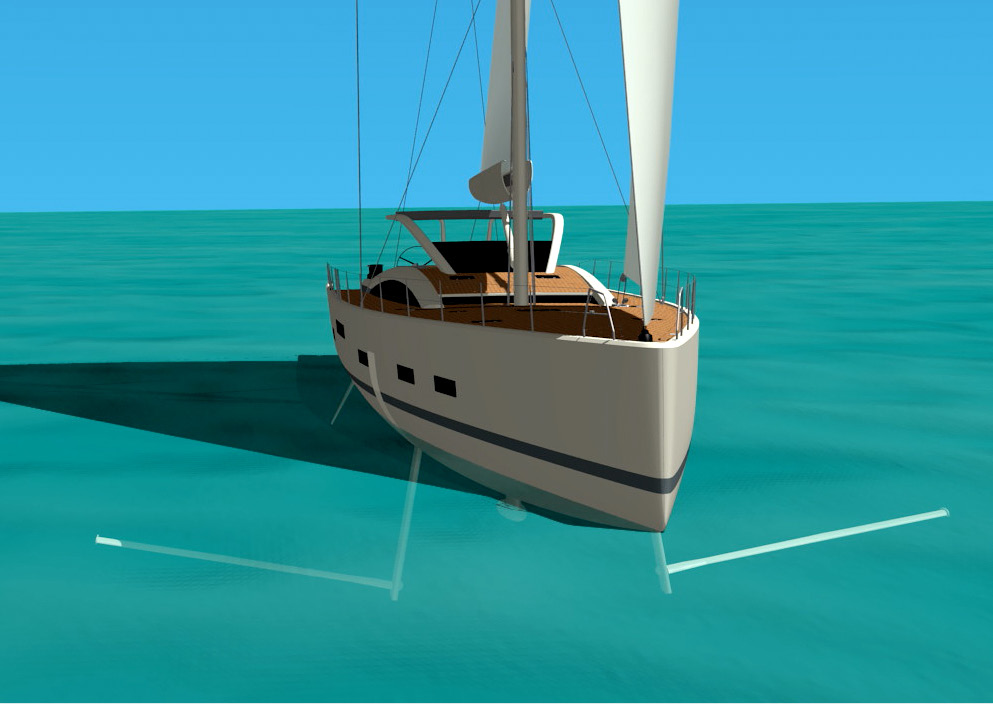
Beginners, within their first sailing years, can cruise safely with their families in strong winds, having both SBS units submerged.
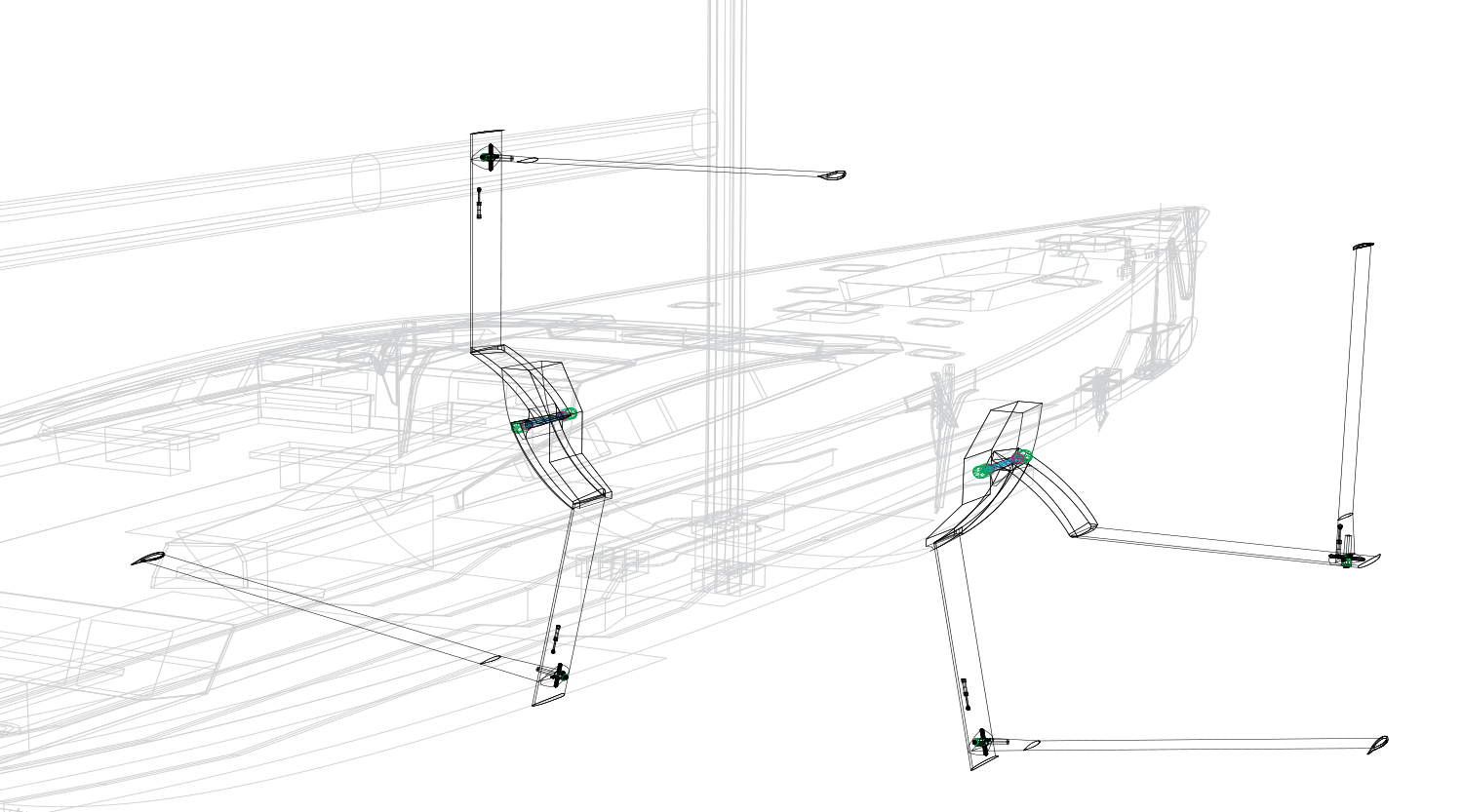
The crew weight at the windward side deck, if desired can be more efficient.
The leeward arm when lowered, reinforced by the windward crew weight, is more efficient when compared to the normal type sailboats.
Windward SBS wing also can be displayed fully extended to the vessel side, and its weight will help the vessel to keep his perpendicular position.
Either maximizing your sailboat performance and efficiency in a regatta or cruising, you will experience with SBS:
∙ A reduction in fuel consumption
∙ Amazing gains in comfort and stability
∙ Reduced draft for a safe mooring
∙ Bow deck kept dry in all conditions
∙ Smoothness on board while anchored
∙ Safely dry docked
∙ Easily cleaning of the wetted surface and removing debris
SBS is a complete new chapter in sailing experience and a wide horizon for those who love the Oceans.
New times in the history of sailing for a powerfull navigation
Common Questions
MINIMIZES
1. Less Keel Weight
Lift on the leeward SBS wing will compensate the sail heeling moment, reducing the necessity of Keel Weight. How many times have you cruised or sailed carrying tons of ballast on your sailboat for nothing? Need lift? Now you have the assistance of the SBS lift wing.2. Less wetted surface
Every reduction of Keel weight means less hull draft. Less hull draft, less hull wetted surface. Less Keel volume and dimension will also reduce the Keel wetted surface. Sailboats friction resistance, due to their wetted surface, is extremely important for better performance and also for fuel savings.3. Less static displacement / much less dynamics displacement
The static displacement is the sum of the hull's total weight plus the keel weight while the vessel is stopped in the marina or anchored. By reducing the keel weight, the static vessel displacement will be deeply reduced too. When your sailboat begins to move the SBS wing will create lift. In this situation, while the boat is moving, it will reduce once more the vessel dynamic displacement and hull`s wetted surface.4. Less rolling when anchored
While anchored, both sides of the SBS devices may be lowered in the water and they will dump almost complete the rolling movements. The result of the SBS dumping forces are much more efficient than any other stabilizer system. (Gyro and motion fin stabilizers) Zero stability without power consumption. No noises… silent as a good cove anchored night must be.5. Less service to clean the Keel
By arriving on your sailboat, ready for sailing, the SBS wings will be on the deck, right in front of your eyes. To have them cleaned and polished is an easy task. While sailing, if any plastic or trash gets caught, it can easily be removed by placing up the wings.6. Less draft to go anywhere and moored at any Marina
Arriving at your Marina or at any shallow waters spot, you'll feel much more confident. Just place the SBS wings up or in the horizontal position. Draft will deeply reduce in seconds. A small keel, less weight and draft, will provide the necessary protection to your rudder(s).7. Less fuel consumption while browsing engine
When you are cruising on your sailboat and unfortunately you do not have the necessary wind or if the wind is blowing against you, there is no way… you have to start your engine and push the throttle. All the standard sailboats in this situation are carrying a huge amount of ballast weight for nothing. This ballast increases your draft, increases your keel wetted surface, submerges the hull, increase the rolling acceleration on deck (qualm sensation) and again increases your hull wetted surface. Is not only wetted surface, also your hull wave resistance in a standard sailboat is increased due to the extra weight you are carrying, your boat has to move out from your way much more water and you will have to provide all this waves energy (fuel consumption). Having your SBS installed, with much less weight on your keel, you'll be able to place wings above the deck reducing much more wetted surface, resembling a radar arch and move forward. Much more speed for the same engine RPM or much less fuel consumption for the same speed you had in a conventional sailboat. If you are experiencing a choppy sea, you'll be able to place only one SBS wing in the water, adjust for zero degrees heeling angle by pushing an Icon on your tablet and your boat will drive faster and comfortable like it was a top quality huge motor yacht and not a sailboat anymore.8. Less drifting
If the hull length is greater than 70 feet, SBS is able to provide the system with a sender installed in the bow in order to input instant bow acceleration motion into the control system. If the bow is going down, SBS leeward lift wing will provide a fast `KICK` lift stopping this movement. This KICK compensates the loss of bow buoyancy and will not affect the heeling angle. Leeward lift wing will return immediately to the previous angle and your sailboat will be ready to compensate the next wave. Bow deck will be kept dry and crew safety.9. Less crew member needs
You will not invite your friends to a regatta and ask them to jump into the cold water to clean the keel anymore. Your friends will also not be invited to sail with you because their weights are necessary to compensate the sail heeling forces. You will invite them just because you like them. They'll feel enchanted with your invitation. If you want to sail alone is OK. You will be lighter and faster.10. Less rolling when under way sailing
SSBS not only compensates the sail heeling forces but also reduces significantly the rolling movement while sailing. A stable sailboat is more confortable to ride and your sails best shape will be kept constant. Also for twin rudders sailboats the windward rudder will be kept out of the water all time long, reducing the drag, while the leeward rudder will be kept all time submerged and perpendicular to the water plane, maximizing its efficiency.
MAXIMIZES
1. More Speed (sailing or browsing engine)
Less displacement and less wetted surface in all conditions will always improve performance. In a choppy sea if wings are been used the lift will increase speed too.2. More comfort on the sea (in all conditions)
With or without wind you will be always cruising with less rolling movements. Comfort and safety at a touch of your finger.3. Dry Deck
Reduced drifting will keep the bow dry. Also when your Gennaker or Spinnaker is being used, the tendency to put `bow nose down` is significantly reduced.4. More sail area all time
If your desire is to sail having more sail area and, at the same time, keep the vessel almost upright, you'll be able to do so. Just place both SBS in the water, chose your heeling angle and move on. You'll feel that the boat having some speed is kept steady like a rock. The transversal distance between the port and starboard lift angles create a huge upright moment and stability.5. While on shore you will have best quality services, more efficiency in maintenance, security while dry docked having a much lower deck and shell, easier shaft(s) / hull / rudders access for proper maintenance.
While on shore for maintenance, the SBS wings can be kept up in order that your hull, shafts and rudders are closer to the ground. If you have side space while your boat is kept on shore, just place both SBS keel wings down, touching the ground and your sailboat will be kept much more stable during the strong winter wind gusts. If you want during the winter season with the boat on shore remove the lift wings. It can be done using a special tool kit we supply.6. More quality of polished submerged surfaces
The SBS in the Marina is right in front of your eyes, above the deck. Easy to clean and to polish all time.7. More comfort while anchored
The vessel is kept in place and anchors smoothly. The typical movement that sailboats have while anchored, with the tendency to sail to each side (yaw) as the wind front angle changes is completely blocked. The SBS keel wing system prevents the bow from moving sideways, while the stern of sailboats with conventional keels will continue to turn. Rolling movement disappears.8. Sailboat looking view and style with SBS as an illuminated Radar Arch
Sailing at night with the lift wings bellow the sea surface will be illuminated by the plankton luminescence. All night long show…. At anchor, both, port and starboard side wings will be illuminated by side shell lights. (green starboard and red port side) When the wings are up, resembling a radar arch, lights can illuminate the deck, together with the mast.9. Swimming platforms
For small and medium sailboats it is possible to have the lift wings placed bellow the water surface in a deep that makes possible to walk over them. It depends on your specific design.10. Fast plastic remove from keel/wings
While sailing if a plastic is fixed by the lift or keel wings water flow, just place the other side SBS in the water, tack, place the wing above the deck, clean it and tack back to the previous heading.
Other frequent questions:
How much amperes the system needs to operate?
The system in heavy seas, in the AUTO mode, will drop 2.2 to 5 amperes in 24VDC in vessels varying from 30 to 60 feet. In a simple and straight forward manner, each SBS wing has a consumption of an automatic pilot. If the sea is flat, wind is constant, or the gain is reduced, the SBS system will consume much less than an autopilot. If you do not want to compensate automatically the heeling angle or drifting, you can keep the control on your hand in the STAND BY mode. Just chose the lift wing angle and go. In this case you will not drop any power from your battery bank. It is important to understand that the wings kept in a certain constant angle will upright the boat creating heeling lift and at the same time will dump the rolling movement without any power consumption. Benefits can be maximized on AUTO mode but amperes consumption will rise according to what was explained in this text here above.
Is it possible to adapt an electric power generator to the SBS wings?
Yes, definitely. Systems like the world famous and reliable WAT & SEA can be installed at the end of the wing keel. This hydro generator will be able to provide the SBS necessary power for heavy seas, plus charge the sailboat battery banks at the same time.
Is it possible to retrofit my sailboat for a SBS system?
Yes, it is. Unfortunately to get all the SBS system benefits you'll have to talk to an Architect or a Naval Engineer to cut out a huge part of your original keel and install a new small keel which we'll design together with your Architect or Naval Engineer.
Do the SBS sailboats have a keel?
Yes. SBS sailboats MUST have a keel. A much smaller keel is needed, which will be approximately 32 to 60% of a typical sailboat standard keel. This smaller keel will protect the rudders if you run aground, will make your sailboat comply with the basic stability regulations of your country and will be the necessary and sufficient hydrodynamic keel while sailing under soft winds. On soft winds, by sailing with your smaller keel, no other boat will be faster than yours. You'll be able to remove both SBS wings from the water and use them as sails or to incline the boat leeward to maximize sails shape. If the wind blows faster again, just place the leeward side SBS lift wing in the water and you'll more than ever run faster than any other boat.
How the new sailboats projects will be affected by the SBS?
This is the most difficult question to answer… Probably the sailboats worldwide will change completely their designs. Rudders, keels, sails, masts, everything will never be the same. Imagine, for example, an 80 feet fast sailboat in composite. The keel weight can be reduced saving up to 10 tons. The hull waterlines will be changed, speed will be dramatically affected… Reducing the keel weight up to 10 tons will make it possible to install an engine of 1.000 HP on board (why not?), run faster a regatta when compared with normal sailboats and go back to the Marina or cruise to the next Island running above 20 Knots under power. Propulsion system and design for sailboats shall change to a new concept of water jets browsing engine in order that, when the sailboat is sailing, the inlet duct is closed (no propeller drag). Jet outlet on the stern transom will also do not create any drag while sailing. When running at 20 knots or above, under power, SBS can also work as hydrofoils to maximize again the high speed efficiency and run much faster… Construction in composites shall not be a must. Why paying thousands of dollars more to save some kilos or pounds having expensive composite hulls if you can save thousands of kilos and pounds with SBS? There is no way to predict the future, but for sure everything is going to change fast. Traditional sailboat shipyards like Beneteau, Jeanneau, Dufour, Bavaria, Swan, Solaris, CNB, Southern Winds, and others, will have the option for their clients to have a SBS system. Charter boats with less draft, more stability and comfort may be a MUST. Catamarans, well known for comfort, space and speed will have to change their marketing tools. Monohull will be faster than most of the catamarans, less boat beams and expenses at the Marinas, more confortable while anchor, more charm, etc… Catamarans may also have SBS on their bows. Catamarans leeward hulls tendency to "nose down" and capsize will upgrade and sell the idea of a SBS on the bow. If the catamaran is running too fast, the leeward hull SBS will be placed under the water creating lift and avoiding the capsizing tendency. They will also be able to run faster at extreme situations.
What should I do as a sailor and a sailboat owner?
The SBS SYSTEMS team is made of sailors like you, enjoying and respecting the sea. If you have a cruiser sailboat, keep it the way it is. Wait for the future knocking on your door. In the near future SBS sailboats will be available in all the shipyards and you will enjoy having one. If you have a high performance sailboat and you want to race faster than ever, and do not want to wait some years, contact your naval architect or naval engineer, he may contact SBS and we'll provide him with all the information and estimates to retrofit your sailboat. If you are a private person thinking in building a new sailboat or you are a shipyard that always keeps a look in giving your clients the best, then you should contact SBS. The future has just begun.
We would like to thank all support and dedication provided by towing tank teachers and interns of Jaú Technology College (FATEC), in special to MSc. Alex de Almeida Prado and MSc. Vladimir Cancian Junior that helped the SBS team to bring a new horizon and possibilities to the designers and sailors of the entire world.
CONTACT
sbs@sbssystem.com.br
COPYRIGHT ® 2016 - ALL RIGHTS RESERVED